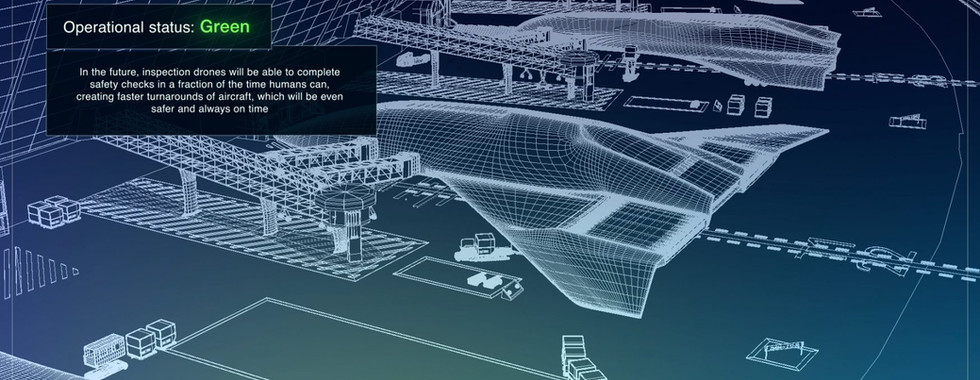By Marti Romances, Territory Studio
At Territory Studio, we blend real-time and pre-rendered CGI with motion graphics to create powerful, immersive web experiences that bring stories to life in compelling ways—both online and beyond.

The success of these campaigns lies in our ability to tell a brand’s story using tools that enhance, rather than overshadow, each product.
And because we understand that good branding relies on building recognition and forging emotional connections, we meticulously design stories that connect these brands to the human experience—creating lasting impressions that truly resonate.
The Role of Emerging Technologies in Storytelling
As we move into the future, emerging technologies are set to revolutionize brand storytelling. With technology becoming a seamless part of our daily lives, how will the web evolve in response?
Brands will need to forge connections with consumers through immersive, interactive experiences. As storytelling becomes more sensory-rich, content will break free from linear structures, inviting audiences to explore dynamic, personalized journeys. This evolution will fundamentally reshape brand engagement, and we see it playing out in four key ways.
Storytelling via Mixed Reality: Virtual, augmented, and extended reality (XR) are already pushing web experiences into new dimensions. Imagine a future where users immerse themselves in brand narratives by interacting with 3D objects or environments, rather than simply scrolling through pages. Agencies will need to craft environments for brands that consumers can step into, creating deeper emotional connections.
Insight: We brought Expo 2020 Dubai to life using dynamic motion graphics and 3D enhancements. Tasked to add realism and energy to the expo, we built a VR experience immersing the audience in airplanes of the future using transparent OLEDs and multitouch surfaces. The project also included future-facing interfaces showcasing advancements in technology, biomedicine, smart homes, and gaming.
The Rise of Collaborative Storytelling: Forward-thinking brands will empower users to co-create narratives, leveraging AI and social platforms to blend user-generated content with brand messaging. Imagine interactive films where users decide the outcome—now expanded to digital experiences where users actively shape the brand’s story. This co-creation deepens engagement, allowing audiences to feel like integral parts of the brand journey. User behavior and preferences will also shape real-time interactions, allowing for highly customized journeys across digital platforms. Virtual and augmented worlds will continue to evolve, enabling brands to offer experiences tailored to individual users, creating narratives that feel unique to each person.
Insight: Collaborative engagement was paramount to the success of our first-ever mobile app DesignCar, a free-to-play game allowing players to customize officially licensed vehicles in stunning real time 3D. 60 officially licensed vehicles from iconic brands such as Porsche, Lotus, and Bugatti can be effortlessly retrofitted using over 200 custom parts to build dream cars that go head-to-head against other players’ vehicles in the game’s global community.
Gamified Experiences: Gamification will become a powerful tool for engaging users, offering rewards, challenges, and interactive elements that drive participation. Whether through subtle interactions, like earning badges in onboarding, or immersive 3D worlds where users control their own path, gamification will deepen engagement and loyalty across brands.
Insight: In a first-of-its-kind immersive gaming experience, we helped Nike launch “Airphoria” on Fortnite. Airphoria enables players to explore a meticulously crafted Air Max–themed universe, allowing them to engage with Air Max sneakers in an interactive experience that marks the intersection of play and culture.
Seamless, Multi-Device Narratives: As users expect experiences that transition smoothly across devices—from desktop to mobile to in-car displays—brands will need to ensure a cohesive story across all touchpoints.
Insight: Augmented reality, for instance, will transform a driver’s experience by offering personalized routes, points of interest, or voice-guided assistance, tailored in real time. We've already seen this take shape in our future-facing design work with automakers such as Audi, Hyundai, and Mercedes.
Through these innovations, storytelling will transform, becoming not just a tool for engagement but a collaborative, immersive journey that allows brands to resonate more profoundly with audiences in new and bold ways.
The Road Ahead
In conclusion, agencies must fully immerse themselves in technology, embrace rapid prototyping and hands-on experimentation to stay ahead of the curve.
This proactive approach has been essential to our studio’s success, driving us to innovate and accumulate valuable insights that have shaped our future.
The time has come to break free from boardroom discourse and lead with action rather than words. By directly engaging with technology, agencies can empower brands to flourish in a constantly evolving digital world.
The message is clear: Act now, or get left behind—because the digital age waits for no one.
ABOUT THE AUTHOR:

Marti Romances, creative director and co-founder of Territory Studio San Francisco, combines diverse influences to create standout content for gaming, film, brand, and digital clients. Originally from Barcelona, he merges creativity with technology to craft engaging, future-facing experiences.






































